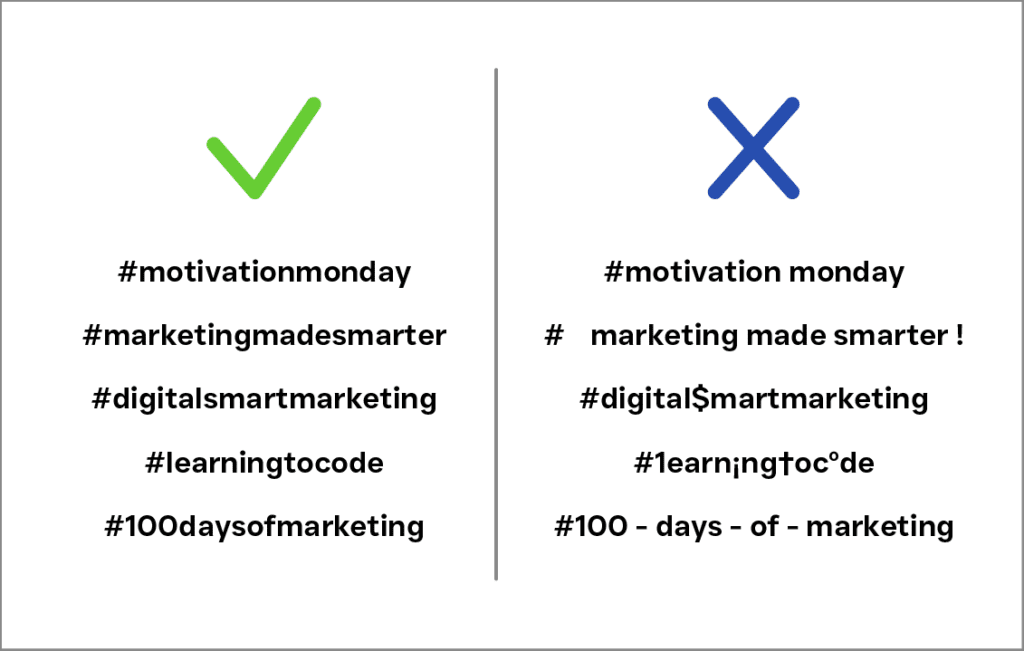What are Hashtags?
Hashtags are words and numbers that follow the # symbol and serve to categorize and track content on social media. You can add hashtags on social posts, bios, and comments for most major platforms, including Instagram, Facebook, TikTok, X (previously Twitter), LinkedIn, and YouTube. Research has shown that using hashtags as part of social media plans can increase engagement by over 20%.
Hashtags are important tools for growing your online presence. Regardless of the social platform, there are several ways that hashtags can benefit your business:
- Increase engagement. Hashtags allow your brand to join larger conversations or trending topics. For instance, let’s say you’re a sports brand that wants to join in on the conversation around the the NFL’s
Super Bowl. You can use relevant hashtags such as #superbowl2024 for this season’s upcoming event and #superbowl to participate in the larger conversation around the annual event. - Widen your reach and build awareness for your brand. Hashtags let you categorize your content so anyone interested in that particular topic or related topics can easily find it. It is an inexpensive way for your brand to be associated with a broad range of topics that are of interest to a wide range of people.
- Add additional context to your posts. Hashtags connect your posts to specific themes, making it easier for your audience to find, understand, relate to and engage with your brand.
- Show support for social issues. Using a hashtag that is connected to an issue that is important to your target market is a very successful way to engage with your current market and reach potential new clients.
There are a number of different approaches for maximizing the effectiveness of hashtags. Each should be considered given your business objectives and the target market you are trying to reach.
#1: Community Hashtags
Community hashtags are hashtags that connect like-minded users around a specific subject. They’re a great way to connect with others, improve the searchability of your posts, gain followers, and grow your own community. Below are 11 different types of community hashtags you can use for your business:
- Hashtags indicating your product or service, like #sweater or #coffeeshop.
- Hashtags indicating your niche in your industry, like #weddingphotographer
- Hashtags for communities in your industry, like #bakersofinstagram
- Hashtags for special events or seasons, like #whiteday or #nationaldonutday.
- Hashtags using location, like #pastrynyc, #madeintoronto, or #sydneysweets.
- Daily hashtags, like #mondaymotivation, #tuesdaytip, or #wellnesswednesday.
- Hashtags with phrases relevant to what you do, like #becreative or #bakerylove.
- Hashtags with acronyms, like #qotd (quote of the day) or #ootd (outfit of the day).
- Hashtags with emojis.
- Hashtags about your profession i.e. #coachforwomen, #lifeofablogger
- Hashtags for lifestyle choices i.e. #feedyourbody, #purposedrivenlife

Consider using a variety of hashtags on your posts and stories so you can reach different communities. For example, if you have a restaurant focused on beef selections in Chattanooga, Tennessee, you can use #chattanoogaeats to reach those looking specifically for restaurants in Chattanooga, and also use #chattanoogasteakhouse for those interested in restaurants known for their menu offerings.
#2: Branded Hashtags
A branded hashtag is a hashtag that’s unique to your company. It can be as simple as your company name, slogan, or the name of one of your products or campaigns. Or it can be a hashtag that has nothing to do with your brand name but everything to do with your brand identity.
While community hashtags are meant to increase the reach of your message, branded hashtags are designed to connect your brand with your target audience. They let you categorize your content so anyone interested in a particular topic can easily find it. They can also be used to promote a campaign or collect user-generated content (UGC).
Getting your followers to use your branded hashtag in their posts and stories is key to getting discovered by new audiences. It’s also a good idea to follow your branded hashtag to keep track of new content that’s being shared. An example of a branded hashtag is Coca Cola’s famous hashtag #MyCocaCola.
#3: Use a combination of popular and smaller niche hashtags.
Because so many accounts are using popular hashtags, it may be easier to expand your brand’s reach and engagement using niche hashtags. To accomplish this, explore using hashtags that will boost your reach among a large audience while also targeting a more engaged and loyal audience that reflects your ideal customers.
#4 Campaign Hashtags
While branded and community hashtags are meant to last, campaign hashtags are usually shorter-term and run for just a few days, a season, or a year. The reason campaign hashtags are shorter-term is that they’re usually tied to specific campaigns, like new product launches, special events, or partnerships. For example Lays #DoUsAFlavor promoted their new fried green tomato flavored potato chips.
Finding the Best Hashtags
In order to be successful with hashtags, you need to be strategic about what hashtags you use and when you use them. Marketers need to do their homework to find hashtags that are specific to their brand and industry and successfully reach and engage their target market. Among others, here are seven steps to find the best hashtags.
- Monitor hashtags used by competitors and social media influencers. Do a competitive analysis on your competition and key influencers for your industry and note the most popular hashtags being used in your industry. Also take notice of how many hashtags are being used in each of their posts. Tools such as Semrush’s Social Media Tracker can be used for this.
- Research hashtags used by industry leaders. One of the best ways to find relevant hashtags is by following influencers that have the same (or similar) target audience as you. These people are already well-established with your target audience, so learn from the best.
- Identify hashtags that are trending. Different tracking tools such as, among others, Keyhole, RiteTag, and Hashtagify can be used to identify current and trending hashtags for your brand and industry.
- Identify the hashtags that your audience is using and see which ones fit the content you’re publishing. Your hashtags should be relevant and contain keywords that your audience is actually searching for.
- Identify hashtags best for each social network. Different software tools, such as that offered by Hootsuite, are available to monitor hashtags and their performance across social networks.
- Find related hashtags. If you already understand which hashtags are working well for your brand, consider using related hashtags. These might be a little more specific than the popular hashtags you’re already using, but help you connect with a more targeted audience.
- Analyze which hashtags have been successful on past posts. Keep track of the hashtags you’ve used. Identify which posts have been most popular, then see if there’s a trend with the hashtags used and your most popular posts.
How to Best Use Hashtags on Social Platforms
Once you have identified the best hashtags, you will need to understand best practices for different platforms.
What is consistent across all of the social platforms is:
- Words, numbers, and underscores can be used without spaces preceded by a hash sign.
- Hyphens and spaces are not allowed.
- Special characters like $ or % are not allowed.
Here is what you should consider when working with Instagram, Facebook, X (previously Twitter), LinkedIn, Tik Tok, and YouTube.
You can include hashtags after writing a caption and in the comments section while engaging with followers. You can use up to 30 hashtags for a post or reel and 10 for a story. However, best practices show that 3 to 5 hashtags are best for a post or reel and 1 to 2 super-relevant tags are used for stories. Most major brands limit their hashtags to focus on those that are specific to their brand, niche, or products.
While Facebook has the option to add hashtags, they are not as popular as they are on other platforms. There is an ongoing debate as to whether hashtags do much of anything on Facebook. Some experts and business owners say they are effective; others say they do not have much of an impact. With that in mind, 1-2 hashtags per post, located in the post copy and comments, is recommended, or it may be best to spend your time working with hashtags on other platforms gaining consistent results.
X (Twitter)
X (Twitter) is the forebearer of social media hashtags and perhaps the most popular spot to use them. You can use hashtags anywhere in your Tweets, but best practice is to use hashtags at the start of a conversation. This is better for organic reach, and it encourages users to engage on social media. Hashtags can also be added in a comment when you Retweet, in replies, and in your X (Twitter) bio. It is recommended that no more than two hashtags be used per Tweet.
LinkedIn makes using hashtags easy. When creating a LinkedIn post, you can either add hashtags directly to the content or click “Add hashtags” at the bottom of the post.There is no limit to the number of hashtags that can be used. However, LinkedIn recommends no more than three per post.
Tik Tok
Like other social platforms, TikTok uses hashtags to organize content and make it easier for brands to be discovered by a specific audience. Unlike other platforms, users tend to mix highly popular hashtags with more niche hashtags, or branded hashtags, to draw in a smaller but more invested audience. Research suggests that 3-5 hashtags be used per post placed in the caption. Hashtags in the comments are allowed but less effective.
YouTube
Hashtags are important and useful on YouTube, as they serve to group videos around similar topics. While you can publish up to 15 tags on YouTube, best practices recommend 3 to 5 hashtags per video, with 1 to 2 placed in the video title, and others placed in the description.
Sources: Semrush, How to Use Hashtags to Increase Your Reach on Social Media,” Kinetic Sequence, “Instagram Posts, Stories and Reels: What’s the Difference? Pros and Cons of All,” Social Pilot, “Instagram Reels vs. Story: How to Use Both to Boost Engagement,” Hootsuite, “How to Use Hashtags in 2023: A Guide for Every Network,” Statusbrew, “How many Hashtags Should I Use on Instagram (Answered),” Sprout Social, “YouTube hashtags: The complete guide for marketers.”


